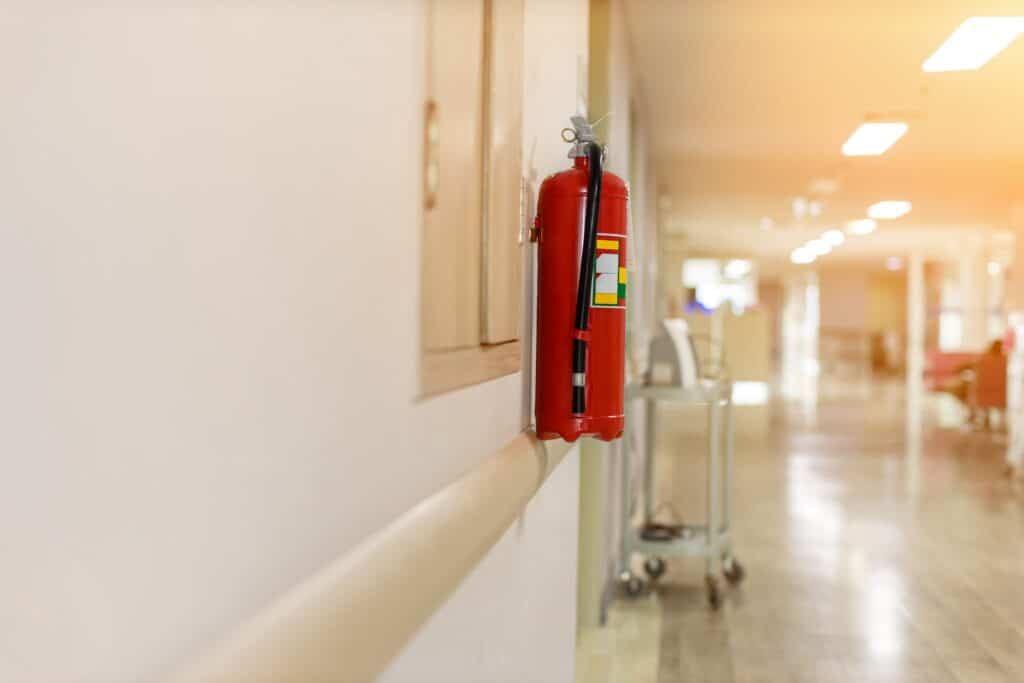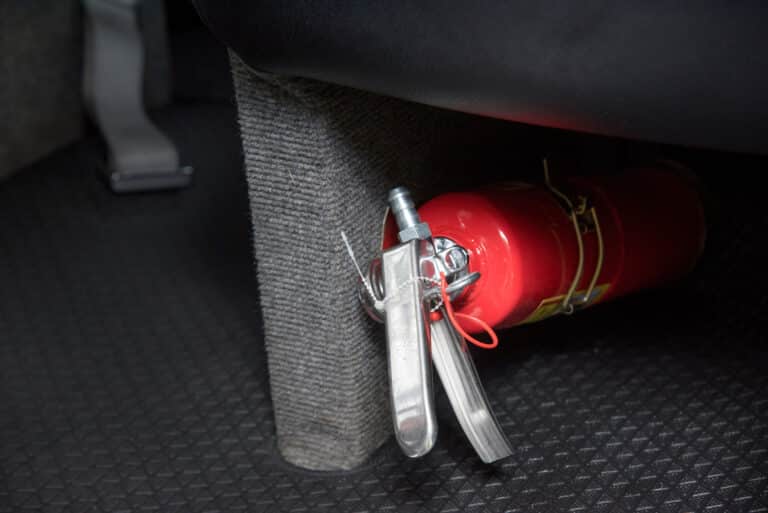Introduction
In every home, workplace, or public space, the threat of fire is a significant concern. Fires can start unexpectedly and spread rapidly, causing damage to property, endangering lives, and even resulting in fatalities. One essential line of defense against such emergencies is the presence of fire extinguishers in strategic locations. The proper placement of fire extinguishers is crucial to ensure their accessibility and effectiveness during a fire incident.
The primary objective of locating fire extinguishers is to provide prompt access and enable quick response in the event of a fire. Fire extinguishers should be positioned in areas where they are easily visible, easily reachable, and situated near potential fire hazards. These hazards may include areas with electrical equipment, flammable liquids, cooking appliances, or any other potential ignition sources.
Key locations for fire extinguishers include exit routes, near fire exits, stairwells, and common areas where people congregate. These locations make fire extinguishers easy to find and reach in an emergency. Additionally, it is important to have fire extinguishers on each level of a building to cater to the needs of occupants on different floors.

Where to put fire extinguishers?
Mount extinguishers on brackets or platforms so escapers may see them. Hang fire extinguishers securely on wall brackets.
Fire extinguishers should be placed strategically to ensure their accessibility and efficacy in an emergency. Key fire extinguisher placement considerations:
Kitchens, workshops, flammable storage, and electrical equipment need fire extinguishers. Locating extinguishers near these hazards speeds response and avoids fire spread.
Exit routes and high-traffic areas: Fire extinguishers should be located along exit routes, near fire exits, and in high-traffic areas where people congregate. This ensures that individuals can easily locate and access extinguishers while evacuating the premises.
Multiple levels: It is essential to have fire extinguishers on each level of a building, especially in multi-story structures. This ensures that occupants have access to extinguishers regardless of their location, reducing response time during a fire incident.
Visible and easily reachable: Fire extinguishers should be clearly visible and placed at a height that allows for easy access. Mounting them on walls or using sturdy stands ensures their visibility and prevents obstruction.
Adequate signage: Proper signage indicating the location of fire extinguishers is crucial. Clear and visible signs help individuals locate extinguishers quickly, even in high-stress situations.
Where do you store a fire extinguisher at home?
Place extinguishers at seconds-accessible locations. Place them in easy-to-grab spots, near exits. The National Fire Protection Association recommends having at least one fire extinguisher on every floor of the home. The first location should be the kitchen.
Home fire extinguisher storage requires some considerations to maintain its accessibility and efficacy in an emergency:
Easy access: Place the fire extinguisher where all family members can see it. It should be accessible, preferably on a wall or solid stand.
Central location: Choose a hallway or kitchen area on the main level of your property. This keeps the extinguisher handy in fire-prone regions. Avoid storing fire extinguishers near stoves, heaters, or flammable liquids. It should be accessible but far from ignition sources.
Proper storage: Keep the fire extinguisher out of severe temperatures and direct sunlight. This keeps it working and increases its lifespan. Signs or labels should identify the fire extinguisher’s storage position. This will help find it in an emergency and alert the family. Fire extinguishers should be regularly inspected for optimal performance.
Which type of fire extinguisher should be located in the kitchen?
Class F wet chemical fire extinguishers
Class F wet chemical fire extinguishers are for residential and commercial kitchen fires. Saponification makes them effective in putting out grease and oil fires.
Kitchen fire safety demands the correct extinguisher. Class K fire extinguishers are suitable for kitchens. Kitchen fires involving oils, greases, and fats require Class K extinguishers. Class K flames need a specific extinguisher.
Class K fire extinguishers use a wet chemical solution to quickly cool the flames and form a foam barrier to prevent re-ignition. This extinguisher is suitable for kitchens because it smothers and extinguishes Class K fires. The Class K fire extinguisher must be easily accessible in the kitchen, away from ignition sources.
Firefighters can easily access it by mounting it on a wall or placing it on a strong stand near the stove. In addition to a Class K fire extinguisher, industrial kitchens need a fire suppression system and domestic kitchens need a smoke detector and fire alarm.
Can a fire extinguisher be in a cupboard?
Locking your outdoor fire extinguisher in a cabinet is the best approach to prevent theft.
Avoid storing fire extinguishers in cupboards. The main reason is accessibility. Keeping a fire extinguisher in a cupboard may make it difficult to retrieve in an emergency. In high-stress situations, finding and reaching the fire extinguisher quickly can help confine and extinguish a fire.
Fire extinguishers should be wall-mounted or on sturdy stands in view. This simplifies extinguisher identification and access. If put along departure routes, fire exits, or high-traffic areas, they are quickly available to residents during emergencies.
Putting a fire extinguisher in a cupboard may delay retrieval due to difficulties. In a fire, heat and smoke may make it hard to reach the cupboard, compounding the issue.

Can I store fire extinguisher under sink?
Storing your extinguisher
Like Pressler said, you shouldn’t keep it under a sink or in a dusty old corner.
Most fire extinguishers shouldn’t go under the sink. While it may seem like a convenient and out-of-the-way location, there are several factors to consider that make it less suitable for storing a fire extinguisher.
Plumbing pipes, cleaning supplies, and other domestic things gather under sinks. This can make it difficult to access the fire extinguisher quickly during an emergency. In a fire situation, time is of the essence, and any delay in retrieving the extinguisher can have serious consequences.
Under-sink areas are prone to moisture and humidity, which can negatively impact the fire extinguisher’s functionality. Moisture can cause corrosion or damage to the extinguisher, rendering it ineffective when needed. Furthermore, the presence of flammable or combustible materials, such as cleaning chemicals, under the sink increases the risk of a fire starting in that area. Placing a fire extinguisher in close proximity to potential ignition sources defeats the purpose of having it readily accessible for immediate use.
Why do fire extinguishers go in box?
Fire extinguisher cabinets prevent abuse and theft by protecting them from weather and filth.
Fire extinguishers are commonly stored in boxes or cabinets for numerous reasons:
Protection from damage: The primary purpose of placing fire extinguishers in a box is to protect them from physical damage. Fire extinguishers can be vulnerable to impact, corrosion, or other forms of wear and tear. The box acts as a barrier, shielding the extinguisher from potential damage caused by accidental bumps, falls, or environmental factors.
Prevention of tampering or misuse: Placing fire extinguishers in a locked or enclosed box helps prevent unauthorized access or tampering. This is particularly important in public spaces or high-traffic areas where the risk of misuse or theft may be higher. The box can lock or need a key or breakable seal to restrict extinguisher use to authorized personnel.
Aesthetics and uniformity: Fire extinguisher boxes can contribute to the overall aesthetics and organization of a space. They provide a neat and uniform appearance, especially in commercial or public settings. Having extinguishers in boxes reduces their visual impact and clutter.
Compliance: Some local rules require fire extinguishers to be placed in boxes or cabinets. This ensures extinguishers meet safety standards and are visible during inspections and audits.
Can fire extinguishers be outside?
Fire extinguishers can be stored outdoors. Protecting your outside extinguishers ensures they are ready for emergencies. Protecting rain- and frost-sensitive fire safety equipment is required by law.
Environmental factors can damage fire extinguishers if kept outside. Fire extinguisher storage outdoors is occasionally required or authorized, but it needs protection.
Outdoor fire extinguisher storage in work areas or construction sites must take these factors into account:
Weatherproof cabinets or enclosures protect extinguishers from direct sunshine, rain, snow, and extreme temperatures. These conditions alter extinguisher pressure and contents, making them ineffective.
Fire extinguishers should be visible and easily available, ideally near fire threats or gathering places. Clear signs should identify extinguisher existence and position.
Outdoor fire extinguishers need more frequent inspections to stay operating. Maintenance and recharging are vital in extreme weather since it accelerates wear and tear.
Do fire extinguishers expire?
Here are the two NFPA fire extinguisher life expectancy guidelines every business owner or facility manager should know: Replace disposable fire extinguishers every 12 years. Rechargeable fire extinguishers every 6 years.
Yes, fire extinguishers do have an expiration date. Over time, the components of a fire extinguisher can deteriorate or become less effective, which is why they have a limited lifespan. The expiration date is typically indicated on the label or tag of the extinguisher.
The expiration date is based on various factors, including the type of extinguishing agent, the construction of the extinguisher, and the manufacturer’s recommendations. Common types of fire extinguishers, such as those with dry chemical or carbon dioxide (CO2) agents, typically have a shelf life of about 5 to 15 years.
Regular maintenance and inspections are important to ensure that fire extinguishers remain in good working condition throughout their lifespan. This includes periodic checks for proper pressure, visible damage, and any signs of corrosion or leakage. At regular periods, professionals may recharge or replace the extinguishing agent and do more thorough examinations.
Expired fire extinguishers may not perform as intended or may not function at all during a fire emergency. It is important to follow the manufacturer’s recommendations and replace expired extinguishers promptly.

Conclusion
Properly placing fire extinguishers is essential to fire safety. Fire incidents can occur unexpectedly, and having easily accessible extinguishers in the right locations can make a significant difference in mitigating the damage caused by fires and ensuring the safety of individuals. These include exit routes, near fire exits, stairwells, and common areas where people gather. Placing fire extinguishers in these strategic positions increases the likelihood of immediate response and allows individuals to quickly access and utilize them when needed most.
Furthermore, the presence of fire extinguishers on each level of a building is essential, as it ensures that occupants have access to firefighting equipment regardless of their location within the premises. This comprehensive approach to placement guarantees that individuals have the necessary tools to combat a fire effectively, irrespective of their proximity to the nearest extinguisher.
The importance of locating fire extinguishers in appropriate positions cannot be overstated. By adhering to established guidelines and regulations regarding fire safety, we can create environments that are better prepared to handle fire emergencies. Properly placed fire extinguishers, along with clear signage indicating their locations, contribute significantly to increasing the chances of suppressing fires quickly and efficiently, minimizing property damage, and safeguarding lives.

